Blog>Expert Advice>Radiator buying guide: Helping you to choose the right radiator for your home
Last updated: 23 October 2024
Radiator buying guide: Helping you to choose the right radiator for your home
Ensure your home is warm and welcoming with the right choice of radiators. We help you select the perfect option for each and every room.

Who knew the world of radiators was so vast? They can be single or double panel, cast iron, or stainless steel; nowadays, there's even the option of mirrored radiators!
In this guide, you will learn everything you need to know about radiators, helping you to make the best choice for your home.
We'll take you through the various types of radiators available, the different fuel sources, style and design, heat output, and energy efficiency.
You'll also be able to find local radiator installers, so when you're ready to kick-start your project, you can be confident in your choice of hire.
See the tradespeople we've checked and recommend for your job
Radiator types
Radiators are available in various styles, each with its own features, benefits, and aesthetic. The type of radiator you choose will depend on factors such as space, personal style preferences and home decor, and your heating requirements.
Panel radiators
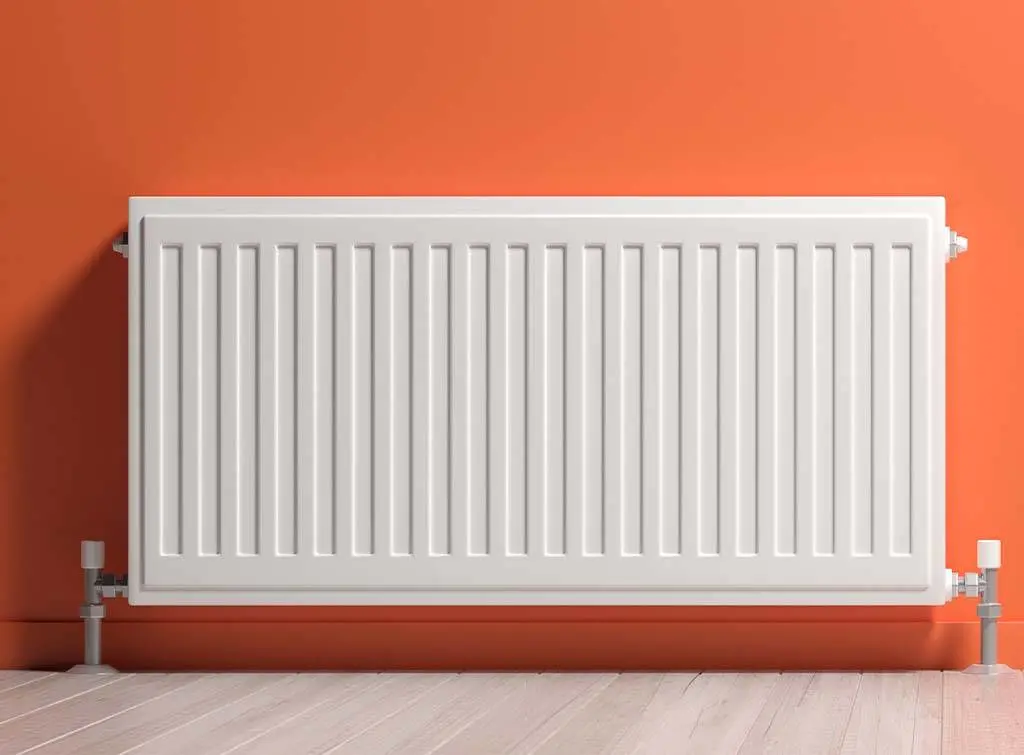
Panel radiators are probably the most common type of radiator found in UK homes. There are several types:
Single Panel (Type 11): Have a single metal panel with one layer of convection fins attached. Ideal for narrow hallways or small rooms. Flat Single Panel radiators are well-suited to minimalist interiors
Double Panel (Type 21): Have a metal panel front and back with one layer of convection fins in between
Double Panel (Type 22): Have a metal panel front and back with two layers of convection fins in between
Double Panel radiators deliver greater heat output than Single Panel radiators, making them better suited to heat medium to large rooms in an economical way.
Vertical radiators
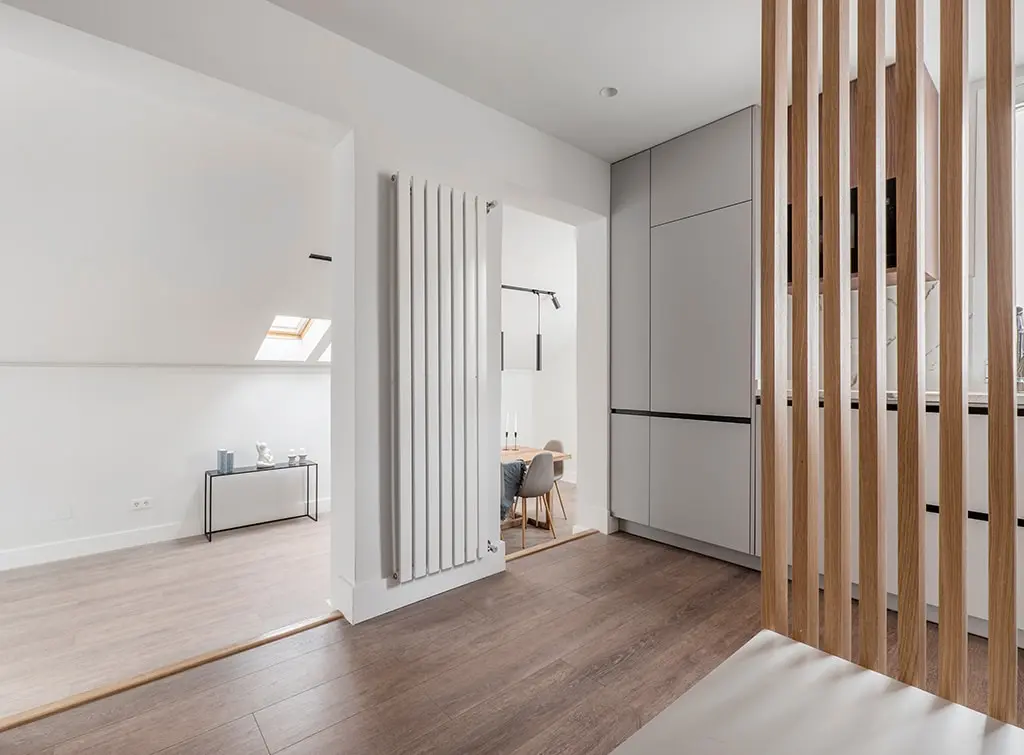
Vertical radiators are a modern alternative to traditional horizontal radiators; ideal for rooms with limited wall space.
Column radiators
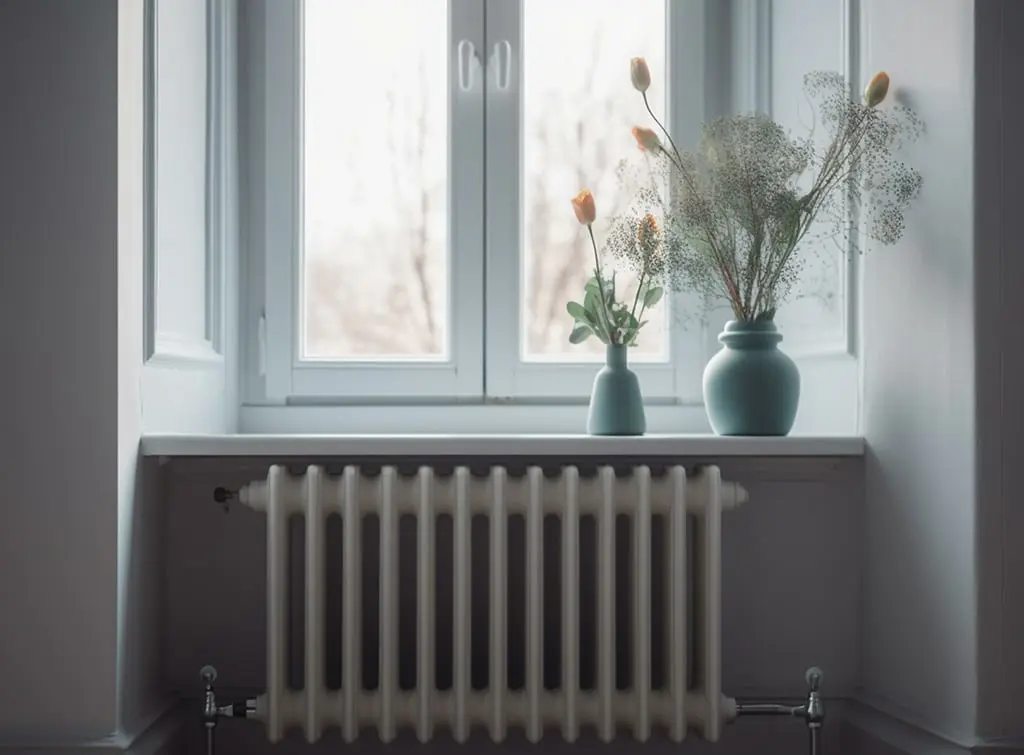
Column radiators are inspired by vintage cast iron designs, and are available in several colours, shapes, finishes, and styles. They can either be floor-standing or wall-mounted, but tend to be bulkier, so they're less suited to narrow spaces.
Towel radiators
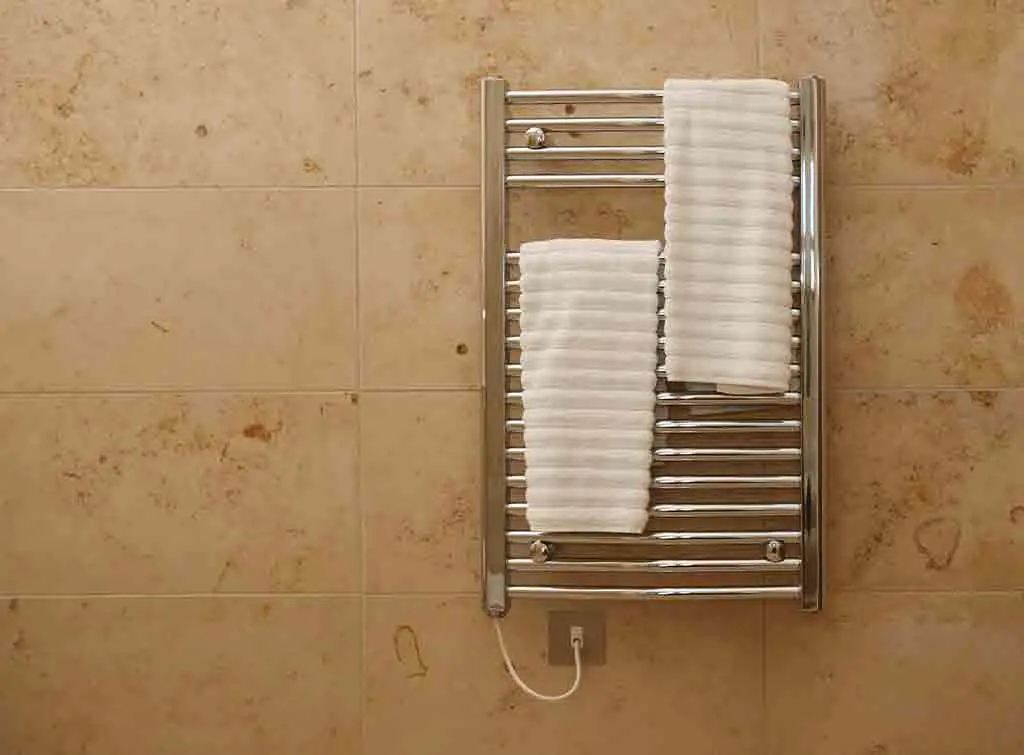
A towel rail - as seen in the image above - is a popular choice in UK bathrooms, providing heat and a practical solution for hanging and drying towels. Towel radiators, on the other hand, typically look like column radiators, but with a rail attached for hanging your towels.
Designer radiators
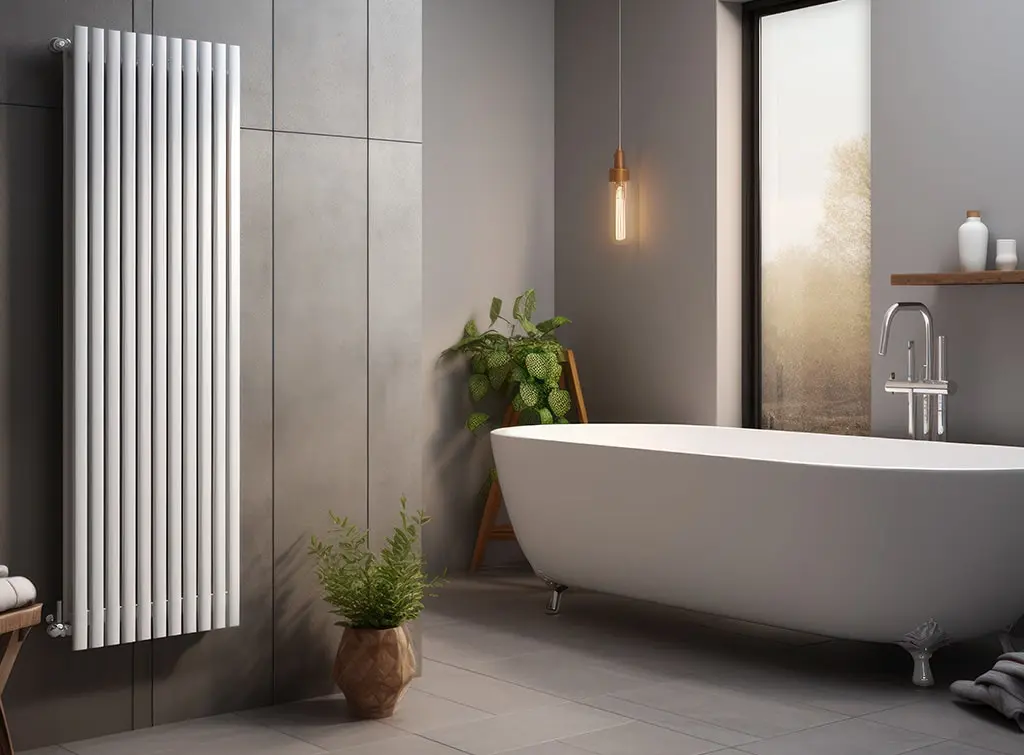
Designer radiators pack a punch in the style, performance, and functionality stakes. They offer a focal point for the room, generate a high heat output, and often have multi-purpose features such as mirrored frontage - great for reflecting light around a smaller space.
See the tradespeople we've checked and recommend for your job
Fuel sources
Whether you're looking to replace old radiators or add more to your home, you'll most likely want to use your existing heating system. Here are the three main radiator fuel sources:
Plumbed in radiators
Central heating radiators are the most common type of radiator in UK homes.
They rely on your home's boiler, which heats water and circulates it to each of your radiators.
Central heating radiators are efficient but take longer to heat up. They are less flexible than electric options as they need the whole central heating system to be switched on.
Tip: Get your boiler serviced regularly to maintain peak performance.
Electric radiators
Electric radiators are a great solution for rooms without existing pipework, e.g. a loft conversion.
They offer precise temperature control due to their built-in thermostats, making them highly energy efficient.
Some models can simply be plugged into a wall socket, whereas others will need to be installed by a qualified electrician.
Dual fuel radiators
Dual fuel radiators combine the best of both plumbed and electric systems.
By adding an electric heating element to a central heating radiator, you can heat individual radiators without turning on your entire central heating system.
This is particularly handy with towel rails and radiators in bathrooms so you can use them in the summer when the rest of the central heating is off to dry towels and reduce mould and mildew.
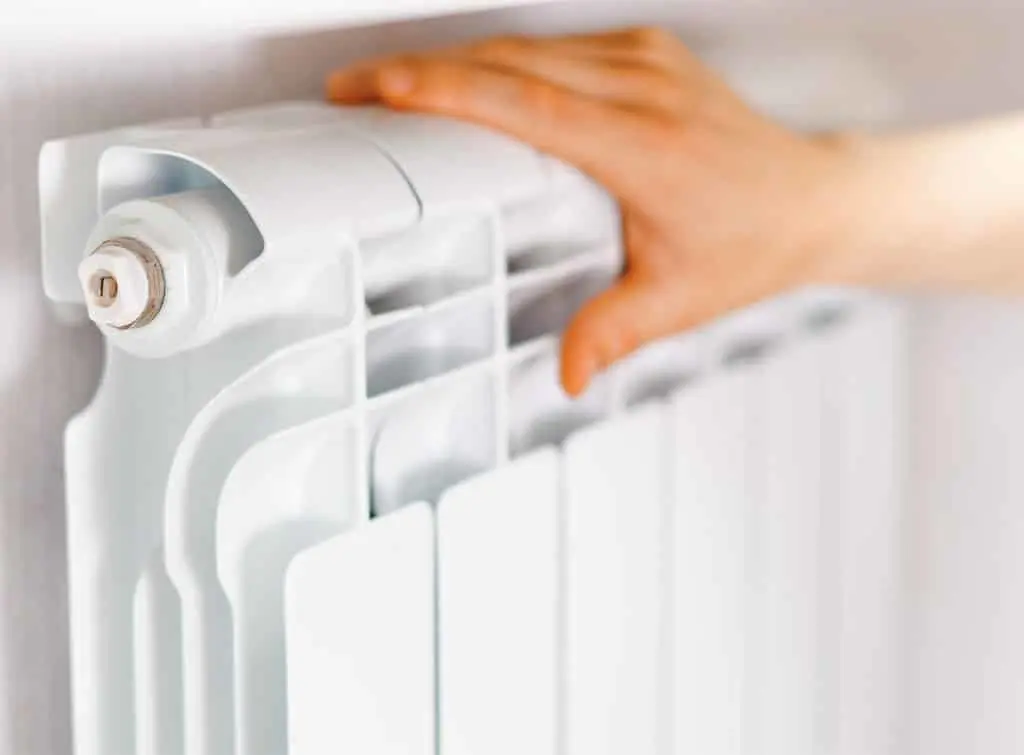
Calculating radiator heat output
The most important factor in all of this is choosing a radiator with the correct heat output.
You'll soon fall out of love with a great-looking radiator if it fails to heat the room adequately. Conversely, a radiator that's too big will overheat the room and cost you unnecessary money to run.
Radiator heat output is measured in British Thermal Units (BTU). This rating indicates how much heat a plumbed-in radiator produces.
The higher the BTU, the higher the heat output. However, it's not always the case that a larger radiator has a larger heat output.
What size radiator do you need?
The required heat output for each room will be different and is calculated by factoring in the room dimensions, the number of external walls, window type, and insulation.
An online BTU calculator can be a helpful guide. If in doubt, or you're struggling to match the exact BTU needed, choose a radiator/s with a slightly higher heat output.
How many radiators do you need?
Depending on the room size, you may wish to distribute the heat more evenly by installing more than one radiator. In this case, take the BTU requirement for the room and divide it by the number of radiators to calculate the average BTUs needed per radiator.
A qualified heating engineer can help you determine the BTU for each room and the most appropriate radiator/s to match.

On Checkatrade, you'll only find trades who meet our high standards and pass up to 12 checks.
Key considerations when choosing a radiator
With an understanding of the types of radiators available, the main fuel sources, and heat output, let's now look at the radiator features to consider to make the right choice for your home.
1. Room size and placement
The size of your room will heavily influence the type of radiator you need. Larger rooms, such as living rooms, may need multiple radiators or a higher-output model.
Where you place your radiators is also key for optimal heating efficiency. Radiators are normally positioned under windows to combat heat loss. However, the range of modern designs available has created more flexibility to choose a layout that best suits your space.
2. Where should you position your radiators?
Three additional factors to bear in mind with the positioning of your radiators include:
Wall type: A solid brick wall can support most radiator sizes and weights, but you may need to use studs to mount a radiator on a plasterboard wall
Existing pipework: Replacing a radiator where existing pipework is already in situ is quicker and cheaper than moving a radiator to a new location
Furniture placement: When planning the installation of new radiators, avoid putting them behind large pieces of furniture as the heat won't be able to circulate around the room properly
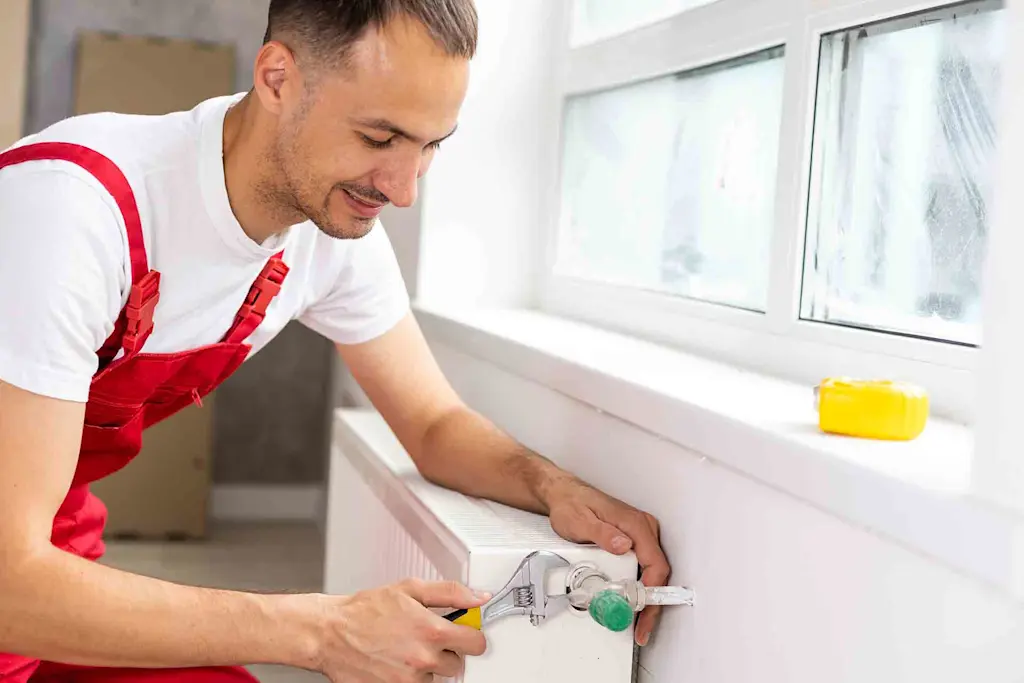
3. What's the best material for radiators?
You may not be aware that radiators can be made from different types of metal. And this affects performance, so here's the lowdown:
Cast iron: Can be slow to warm up but holds onto heat for far longer than steel or aluminium alternatives
Mild steel: A low-cost and durable material that can be easily moulded into different shapes depending on space requirements
Stainless steel: Designed not to rust, making it very durable. Stainless steel stays hot long after switching off the power supply, so it’s suitable for hanging damp towels in bathrooms
Aluminium: Arguably the best radiator material. As a superconductor, aluminium is most effective for warming a space quickly and efficiently. It’s also lightweight and easy to install
4. Radiator valves and energy efficiency
All plumbed-in radiators need a valve in order to control the heat output of the radiator. Radiator valves are sold separately from the radiators so that you can choose how to control your heating. The main options are:
Manual radiator valves: The most traditional type, allowing you to turn your radiator on and off by hand, like a tap
Thermostatic radiator valves (TRV): TRVs create the option of controlling the temperature of each radiator individually. This is done automatically as the valve senses the room's temperature and adjusts the flow of hot water accordingly
Smart radiator valves: These valves can be connected to WiFi and controlled via an app, giving you the option of scheduling and controlling your home's heating even when you're out
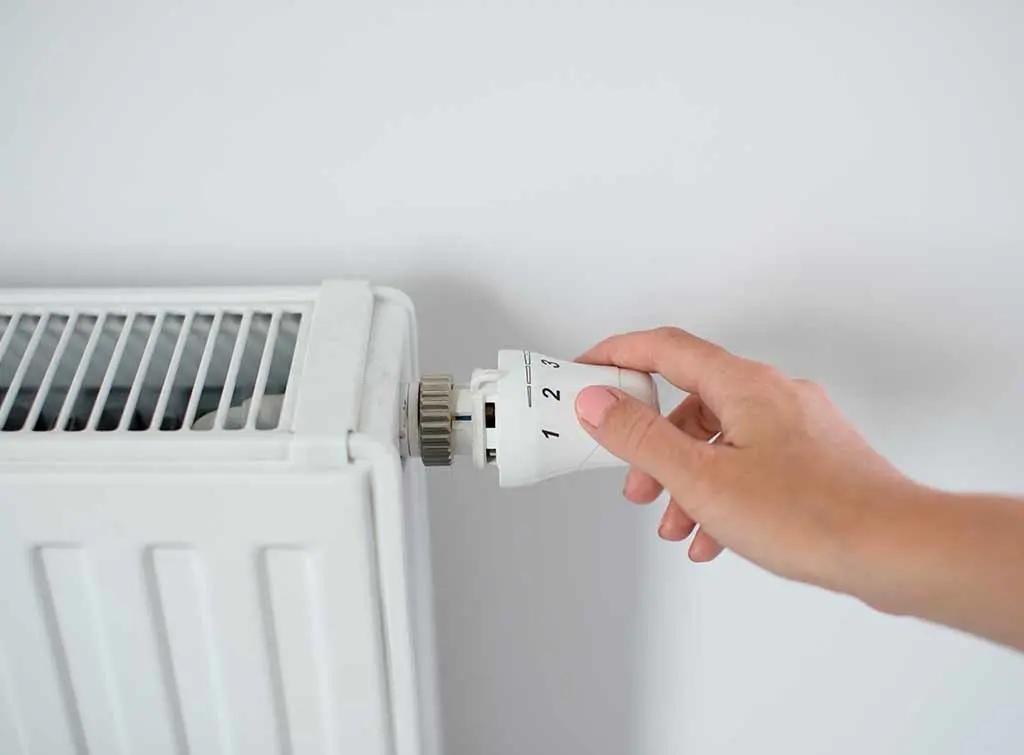
5. Style and design
Radiators used to be purely functional, but now they're available in a range of styles, materials, designs, and colours.
Choosing a coloured column radiator can act as a stylish focal point in a kitchen, for example. While a streamlined vertical radiator can blend in with more minimalist decor.
6. Covers and cabinets
Radiator covers and cabinets are a popular way of turning a radiator into a decorative and practical feature.
This has the added benefits of disguising more basic models and protecting young children from hot radiators.
See the tradespeople we've checked and recommend for your job
How much do radiators cost?
Radiator costs vary depending on the type, size, and material.
Generally speaking, radiators range from around £40 - £400.
Standard Panel radiators tend to be the cheapest option. Column, vertical, and designer radiators will cost more. However, there's a wide price variation, so shop around and you'll be sure to find something that suits your requirements and budget.
Electric radiators, on the other hand, cost around £400. This is for supply only - you will need to factor in the cost of installation if needed.
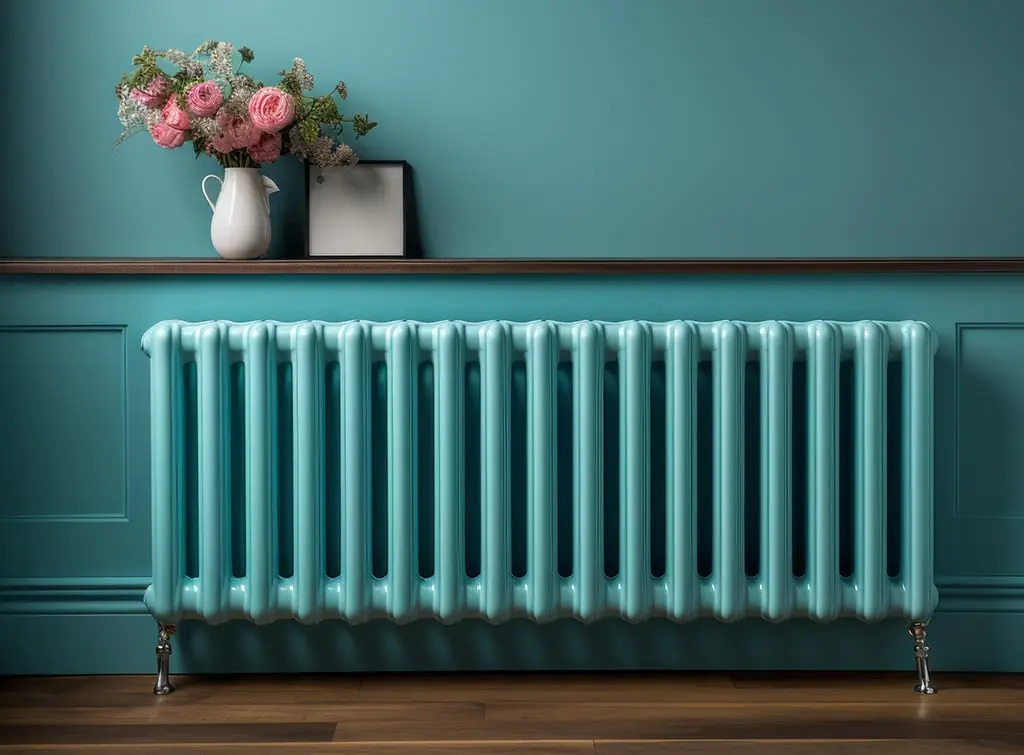
In summary
Selecting the right radiators for your home involves balancing style, function, and efficiency.
By considering room size, heating requirements, and design preferences against your available budget, you'll find the best type of radiator for every room.
Contact or pay a trade through Checkatrade and you’re covered by our 12-month guarantee of up to £1,000*

Find a qualified plumber to fit your radiator
Radiators are best installed by a qualified professional.
For work that involves the boiler, a Gas Safe registered engineer is needed
If pipes need to be moved or installed, a qualified plumber will be required
Meanwhile, any mains electrical work will need to be carried out by a qualified electrician
Always obtain several quotes for your radiator installation and compare them like-for-like to ensure you receive a fair and competitive price for the work.
Check qualifications and experience and take the time to read online reviews from previous customers.
You can do this quickly and easily with Checkatrade, which helps connect you with quality tradespeople you can trust.
Search your postcode below to see who comes highly rated in your area.
See the tradespeople we've checked and recommend for your job
See the tradespeople we've checked and recommend for your job


